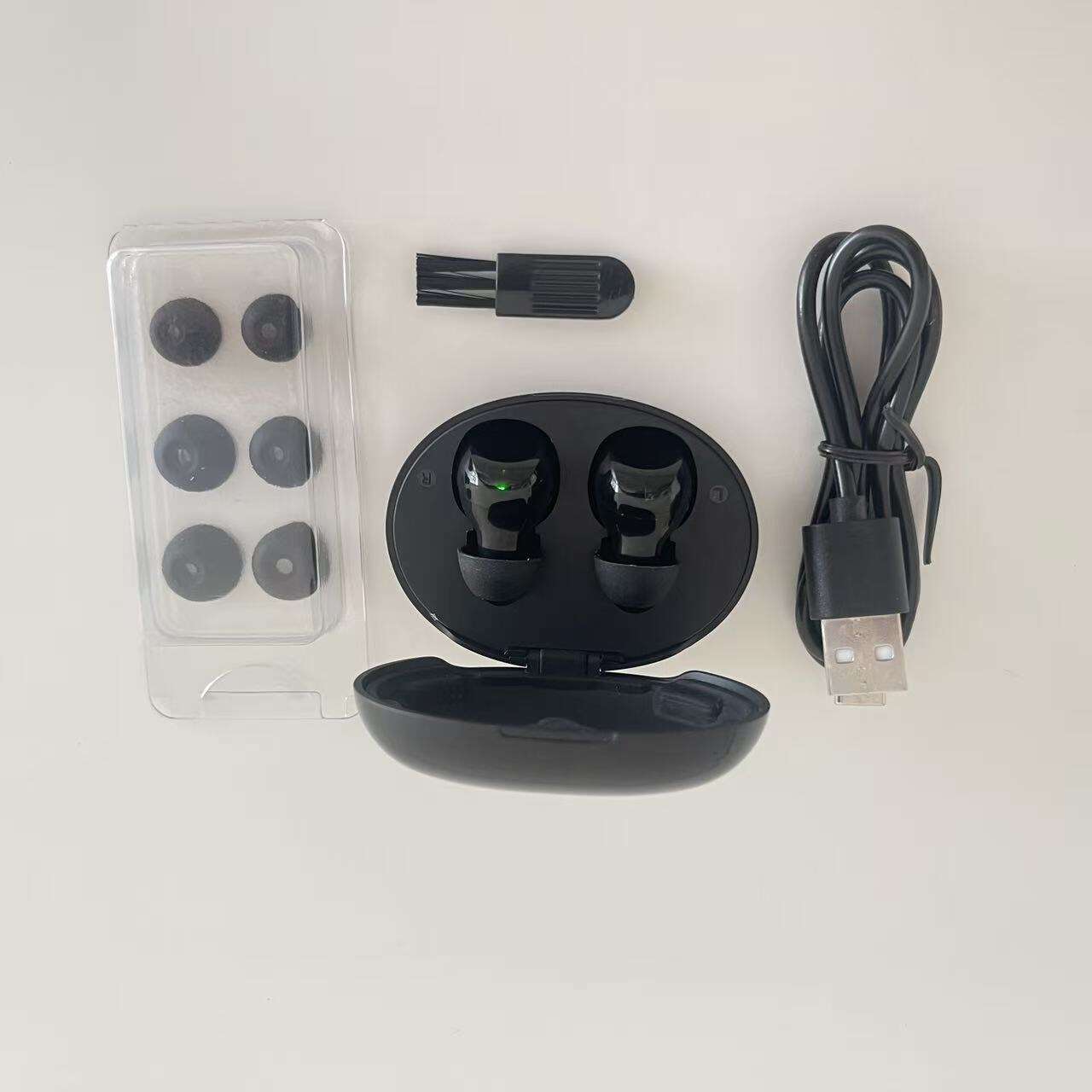Improved Communication and Daily Functioning with Hearing Aids
Enhanced Sound Clarity and Real-Time Communication Benefits of Hearing Aids
Today's hearing aids work by boosting speech sounds while cutting down on background noise, which helps people pick out who they're talking to in busy places about 27% better than without them according to research from Frontiers in Neuroscience back in 2022. The latest models come equipped with directional microphones plus smart software that adjusts on the fly based on what's happening around the listener. This solves one big problem many had before when nearly 7 out of 10 users found themselves frustrated by lagging audio responses as noted by Ferguson and colleagues in their 2017 study. All these improvements make it much easier to stay engaged in conversations whether at work meetings or sitting down with family members for dinner.
Overcoming Hearing-Related Challenges at Home and in Public Settings
People who wear hearing aids are noticing something pretty significant these days. According to research from Ponemon in 2023, they ask family members to repeat themselves about 53% less often during regular chats at home. That makes a big difference when someone misses important parts of conversations and feels frustrated afterward. Around the house itself, there's been a noticeable boost in environmental awareness too. About 41% more people can hear things like their microwave going off or water dripping from a faucet, which helps them stay safe and live independently longer. The good news keeps coming outside the home as well. Most public places are getting better accessibility features. Take a look around: roughly 84% of movie theaters and religious buildings now have those special loops built in so hearing aids can connect right to the audio system without any extra equipment needed.
Performance of Hearing Aids in Noisy Environments: Real-World Listening Experiences
Field testing shows that premium hearing aids give about 9 dB better signal clarity in noisy restaurants compared to standard models according to research published by Yuan and colleagues back in 2021. Background noise is still tough to deal with sometimes, but these advanced devices come equipped with smart noise cancellation tech that actually works pretty well at cutting down constant sounds like air conditioning units around 93% of the time. People who travel frequently find the spatial awareness functions really helpful too. These features boost important sounds such as flight announcements at airports while making those annoying shopping cart wheels and heavy footfalls much less distracting during their commute through busy train stations.
Case Study: Communication Improvements in Elderly Users After Hearing Aid Adoption
A 12-month longitudinal study tracked 120 seniors (average age 72) with moderate hearing loss. Participants using hearing aids showed:
- 58% increase in weekly social interactions
- 42% reduction in conversation avoidance behaviors
- 31% improvement in TV dialogue comprehension
By month six, 79% reported feeling "significantly more connected" to family members during gatherings. These communication enhancements correlated with measurable decreases in depression screening scores (-19%) and anxiety levels (-14%) compared to the non-aided control group (Johns Hopkins 2023).
Social Engagement and Emotional Well-Being Supported by Hearing Aid Use
Reducing loneliness and social isolation through improved auditory access
People who struggle with hearing often pull back from social situations, but hearing aids can really change this pattern. Recent research looked at 65 different studies from 2023 and found that around four out of five users said they could join in conversations better when they were part of a group. These devices make it easier to hear what's going on around us, so people notice things like how someone says something rather than just what they say. That matters because we pick up so much from tone of voice during chats with friends or family members. Getting back into community events becomes possible again for those who might have stopped attending church gatherings, local sports games, or even weekly coffee meetups simply because they couldn't follow along properly before.
Emotional well-being gains from restored conversational confidence
When people don't have to keep asking others to repeat themselves all the time, it actually helps build mental toughness. According to a recent 2024 report on ear health, around 8 out of 10 folks who start using hearing aids notice their social anxiety goes down after just three months. Many patients talk about how they can finally catch up with neighbors at the park again or laugh along when telling stories to the grandkids something that used to be frustrating because so many words got lost in translation before getting help.
Longitudinal evidence on hearing aids and sustained social participation
Five-year follow-up studies reveal consistent patterns:
- 68% maintenance of social activity levels among hearing aid users vs. 41% in non-users
- Three times greater likelihood of attending public events compared to those with untreated hearing loss
Critical view: Limitations in fully restoring emotional connectivity
While hearing aids significantly improve speech comprehension, some users still report difficulties interpreting subtle emotional tones in conversations.
Occupational, Educational, and Cognitive Benefits of Hearing Aids
Hearing Aids and Professional Advantages
Hearing aids make a real difference for both adults and students dealing with tough listening situations every day. Business professionals often notice they can concentrate better during important meetings or when taking calls from clients. Students find themselves understanding what professors say in class and following along with lectures becomes more manageable. Colleges and universities aren't standing still either. Nearly seven out of ten schools now provide special sound amplification systems alongside individual hearing devices.
Workplace Integration and Adaptations for Hearing Aid Users
Workplaces today are starting to implement specific measures that help people who use hearing aids get by better at work. Some companies have created meeting rooms where background noise is minimized. Many businesses also offer flexible options now, like encouraging staff to use video conferencing tools with captions turned on during meetings. These small adjustments make a big difference, fostering inclusivity and maintaining productivity.
Cognitive Health Benefits from Hearing Aids
Hearing aids help keep our brains active by providing regular sound input, which is important for cognitive health. With clearer sounds, the brain doesn't have to work as hard to interpret speech, preserving important cognitive functions. This mental activity helps maintain brain connections, potentially providing protection against dementia over time.
User Experiences with Modern Hearing Aid Technology
Over 82% of hearing aid users report satisfaction with modern devices' sound quality and design. Advances in technology have led to features such as:
- 360° sound capture in crowded environments
- Customizable frequency profiles for different audio scenarios
- Bluetooth streaming with low latency
| Innovation | User Impact | Adoption Rate Increase |
|---|---|---|
| Bluetooth-enabled hearing aids | Improved synchronization for streaming | Significant adoption growth |
| Smart noise cancellation | Reduces background noise effectively | Enhanced user experience |
Environmental Sound Awareness and Personal Safety Improvements
Today's hearing aids do more than just boost volume. They enhance environmental sound awareness, helping users better detect potential hazards, which aids in personal safety. A recent study highlighted that most users noticed improved hazard detection, aiding in accident prevention and increased confidence in various environments.
Restored Enjoyment of Music, Media, and Active Lifestyles
Increased sound clarity and directional microphones in modern hearing aids allow users to enjoy music and media more fully. Streaming capabilities and noise reduction features help improve audio quality, making everyday activities much more enjoyable and accessible, thus encouraging active lifestyles.
FAQ
What are some benefits of using hearing aids in daily life?
Hearing aids enhance sound clarity, improve real-time communication, reduce the need for others to repeat themselves, help with environmental sound awareness, and contribute to better personal safety and overall quality of life.
Do hearing aids work well in noisy environments?
Yes, the latest technology in premium hearing aids provides better signal clarity in noisy places and incorporates advanced noise cancellation, improving the ability to focus on important sounds.
Can hearing aids reduce social anxiety?
Yes, many users experience a reduction in social anxiety and an increase in social interactions due to improved hearing and conversational confidence.
How do hearing aids support brain health?
They keep the brain active with regular sound input, helping preserve cognitive functions and maintaining neural connections, which may protect against dementia.
Table of Contents
-
Improved Communication and Daily Functioning with Hearing Aids
- Enhanced Sound Clarity and Real-Time Communication Benefits of Hearing Aids
- Overcoming Hearing-Related Challenges at Home and in Public Settings
- Performance of Hearing Aids in Noisy Environments: Real-World Listening Experiences
- Case Study: Communication Improvements in Elderly Users After Hearing Aid Adoption
- Social Engagement and Emotional Well-Being Supported by Hearing Aid Use
-
Occupational, Educational, and Cognitive Benefits of Hearing Aids
- Hearing Aids and Professional Advantages
- Workplace Integration and Adaptations for Hearing Aid Users
- Cognitive Health Benefits from Hearing Aids
- User Experiences with Modern Hearing Aid Technology
- Environmental Sound Awareness and Personal Safety Improvements
- Restored Enjoyment of Music, Media, and Active Lifestyles
- FAQ

